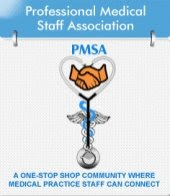by Jennifer Zarate
We are all aware that we should help others, but not become part of the problem ourselves. That may be easier said than done in these tough economic times. After years of decreasing payment and increasing overhead costs, physician practices may now face even more dilemmas as patients increasingly feel the economic squeeze.
How do you handle the patient that has been with you and faithfully paid for the last twenty years, but lost her job last year and in ready for her account to be in collections? You hate to lose her and now many of your patients in the community are without jobs-what is a physician to do?
Most practices already have some type of plan for indigent care. These can include payment plans, assistance in obtaining loans for the balance or lines of credit, and writing off balances based upon strict criteria. Many practices require that the patient show proof that they have attempted or are in the process of obtaining governmental or community assistance, prior to consideration of write-offs. However the recently laid off patient may not be eligible for the traditional financial aid and is likely less knowledgeable about obtaining assistance.
Patients who are behind on their bills to you are probably having problems with other creditors as well. Patients most affected may be those with high-deductible health plans or whose COBRA premiums are unaffordable. To assist these patients, you may want to ask your staff to look into what resources are available in your community. In addition to the standard governmental resources, there may be community and faith-based charities as well. Your local hospital will probably be able to provide you with a listing. For patients who cannot afford their medications or whose health care needs would be better met through a free clinic, resources can be found through the Partnership for Prescription Assistance web site https://www.pparx.org/Intro.php. This web site provides information and applications for prescription assistance by state and medication as well as a listing of free clinics by zip code (see the Resources page). If a patient does need to seek care elsewhere, it is important to actively coordinate the transfer of care and ensure that all acute conditions are adequately managed prior to release from your care.
It is also important to select staff that is assertive, but respectful to counsel patients regarding their financial responsibilities. Patients should not be made to feel ashamed of their inability to pay but also should recognize that the physician practice is a business with expenses and obligations that also must be met.
Maintaining Practice Viability
This is a good time to review your patient payment policy and procedures. Talk to your billing manager/staff and review financial reports to find out where you are at financially in comparison to last year, take a pulse of the practice and evaluate the revenue-cycle process. Consider providing staff additional training to ensure that proper billing protocols are in place. Tips to enhance practice revenue include:
- Patient information is being entered correctly the first time by staff including patient demographics and codes, and modifiers.
- Complete documentation and submit charges as promptly as possible.
- Monitor whether insurance payments are received in timely fashion and amounts allowed are based upon existing contracts.
- Establish processes for review of denied charges to correct and resubmit claims, identify patterns of denials, and address any ongoing payment issues. Discovering a small problem now keep it from costing you more in the long run.
- Collect co-pays and deductibles or any portion the patient can offer at the time of service. Accept credit and debit card payments.Take advantage of real-time claims adjudication systems if available.
Other Options to Consider
If you do not already have a prompt payment discount for patients who are paying at the time of service, this may be something that you want to consider. Payers require that you provide discounts to their insured while withholding most of the payment until a “clean claim” has been submitted and processed. It saves your practice time and money to collect payment in full at the time of service so it may make sense to pass a portion of those savings on to the cash-patient. (Be sure that receipts are given for all point of service payments with duplicates kept in your records and frequently monitor these receipts against deposits.)
Some practices have gone to a bartering system. This can be regulated by the community and should be reviewed by your accountant and/or attorney before it is agreed upon. Valuing some services can be difficult. To help in this process there are now bartering services available on-line. For a membership fee, the service helps establish fair value and helps to process and track the services. This can be a great way to pay for work done to the building or services needed. How this will affect the practice and the revenue should be discussed with all partners in the practice. While the service is a great idea, you will need to maintain a balance between traditional payment and bartering. You will still need cash to pay for supplies, staff and other overhead charges.
Deciding how to care for the growing number of patients without insurance or the inability to pay for services is a difficult decision with no easy answer. What works for one practice may not work for another, but ask around and see how others in your area are handling the problem. You might find a solution that benefits both your patients and your practice.
